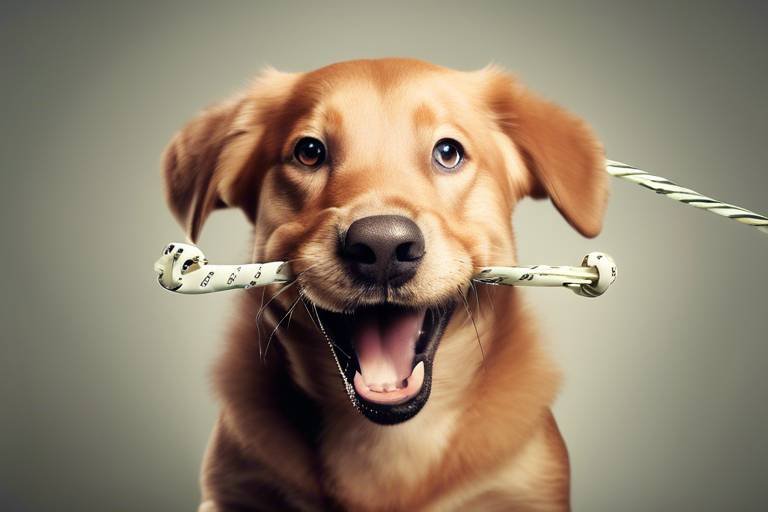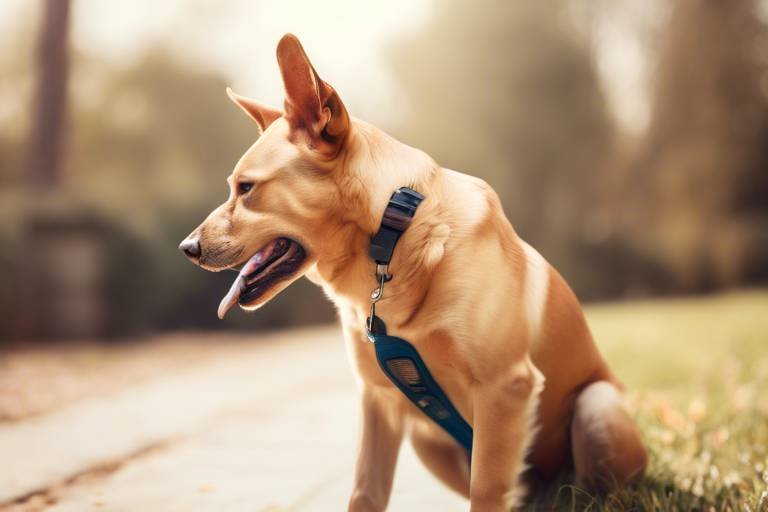How to Help Your Dog Overcome Fear of Large Objects
Does your furry friend tremble at the sight of a garbage truck or cower behind the couch when a vacuum cleaner rolls by? You're not alone! Many dog owners face the challenge of helping their pets overcome a fear of large objects. Understanding and addressing this fear is crucial for your dog's well-being and happiness. In this article, we’ll explore effective strategies to help your canine companion feel more confident and relaxed around those intimidating giants in their world.
To effectively help your dog, it's crucial to understand the nature of canine fear, its causes, and how it manifests in different situations, especially regarding large objects. Fear in dogs can stem from various sources, including lack of socialization, traumatic experiences, or even genetic predisposition. When dogs encounter large objects, their instincts may trigger a fight-or-flight response, making them feel threatened. This reaction can lead to various behaviors, including barking, hiding, or even aggression. By understanding these underlying factors, you can better equip yourself to help your dog navigate their fears.
Recognizing specific large objects that trigger your dog's fear is essential. Start by observing your dog's behavior in different environments. Does your pup shy away from large furniture, or do they freeze when a car drives by? Keeping a journal of these observations can help you identify patterns and specific triggers. Once you have a clearer picture, you can create a tailored approach to desensitization. For instance, if your dog is afraid of bicycles, you might begin by exposing them to a stationary bike from a distance before gradually moving closer.
Large objects such as vehicles, furniture, or construction equipment can instill fear in dogs. Understanding these common triggers helps in developing a focused training plan to address the fear. Some examples of common triggers include:
- Vehicles: Cars, trucks, and buses can be particularly intimidating due to their size and noise.
- Furniture: Large pieces like sofas or bookshelves may appear overwhelming in a dog's environment.
- Construction Equipment: The noise and movement of machinery can be frightening for many dogs.
Dogs exhibit various behavioral signs when fearful, such as barking, hiding, or trembling. Identifying these signs can help owners recognize their dog's discomfort and respond appropriately. For example, if your dog starts to whine or pulls away when they see a large object, it's a clear indication that they are feeling anxious. Being attentive to these cues allows you to intervene and provide reassurance when needed.
Factors like noise, movement, and unfamiliar settings can exacerbate a dog's fear. For instance, a busy street with honking cars may overwhelm a timid dog. This section discusses how to assess and modify the environment to lessen anxiety related to large objects. Creating a calm atmosphere through controlled exposure can significantly reduce fear. Consider using noise-canceling devices or calming music to help your dog feel more at ease.
Desensitization is a gradual process that helps dogs become accustomed to large objects. Start by introducing your dog to large objects in a controlled manner. For example, if your dog is afraid of bicycles, you might begin with a stationary bike in the backyard. Allow your dog to explore it at their own pace, rewarding them with treats and praise for calm behavior. Gradually increase the challenge by introducing moving bicycles from a distance, always ensuring your dog feels safe and secure.
Utilizing positive reinforcement is vital in helping your dog overcome fear. This section explains how to implement rewards and encouragement to build confidence around large objects. Whenever your dog shows curiosity or calmness around a previously feared object, immediately offer praise or a treat. This positive association can help shift their perception of large objects from something scary to something rewarding.
Establishing a consistent reward system can greatly enhance your dog's learning experience. Use high-value treats that your dog loves, like small pieces of chicken or cheese, to motivate them during training sessions. Remember, the goal is to create a positive and enjoyable experience that encourages your dog to face their fears head-on.
Providing a safe space for your dog during training is essential. This space should be a cozy area where your dog feels secure and can retreat if they become overwhelmed. Consider using a crate or a designated room filled with their favorite toys and blankets. This comforting environment will help your dog feel more at ease as they learn to confront their fears.
Sometimes, professional assistance is necessary for overcoming severe fears. If your dog's fear of large objects significantly impacts their quality of life or leads to aggressive behavior, it may be time to consult a veterinarian or a certified dog trainer for additional support. These professionals can provide tailored strategies and guidance to ensure your dog receives the help they need.
1. How long does it take for a dog to overcome fear?
The time it takes for a dog to overcome fear varies based on the individual dog and the severity of the fear. Some dogs may show improvement within weeks, while others may take months. Consistency and patience are key!
2. Can all dogs be desensitized to large objects?
Most dogs can be desensitized to some extent, but the process may be more challenging for those with severe fears. Working with a professional can help tailor the approach to your dog's needs.
3. What should I do if my dog becomes aggressive when scared?
If your dog shows signs of aggression, it’s crucial to seek professional help immediately. Aggressive behavior can pose risks to both your dog and others, and a professional can guide you on how to manage these situations safely.
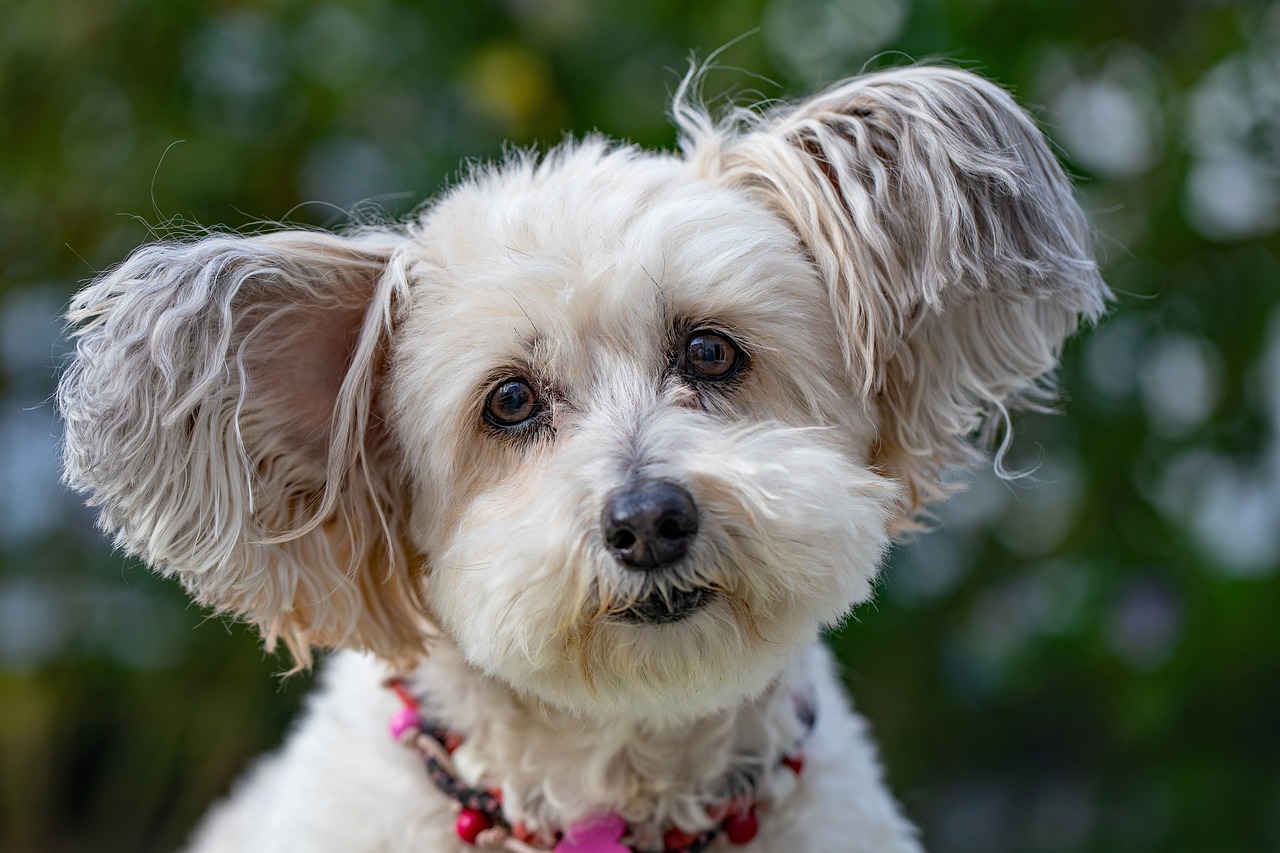
Understanding Canine Fear
To effectively help your dog, it's crucial to understand the nature of canine fear, its causes, and how it manifests in different situations, especially regarding large objects. Just like humans, dogs experience fear, but their triggers and expressions can be quite different. Fear in dogs can stem from various sources, including past traumatic experiences, lack of socialization, or even genetics. Imagine a dog that had a negative encounter with a large vehicle; every time it sees one again, it may feel that same wave of panic wash over it. This is how fear can become ingrained in a dog's psyche.
Dogs communicate their fears through body language and vocalizations. For instance, a dog might cower, avoid eye contact, or even bark excessively when faced with something that scares them. Recognizing these signs is the first step in helping them overcome their fears. Furthermore, it's essential to note that fear can manifest in different forms. Some dogs may become aggressive, while others might retreat into their safe spaces. Understanding these nuances is key to tailoring an approach that suits your dog's specific needs.
Environmental factors also play a significant role in a dog's fear response. Loud noises, sudden movements, and unfamiliar settings can heighten anxiety levels. For example, if a dog is already skittish, the sound of construction equipment can amplify their fear, making them more reactive. It’s almost like adding fuel to a fire; the initial fear can escalate into a more significant anxiety problem if not addressed properly. Therefore, assessing your dog's environment and identifying potential stressors is crucial in creating a supportive atmosphere.
In summary, understanding canine fear is about more than just recognizing that your dog is scared. It's about delving into the roots of that fear, observing their behavior, and considering the environmental factors at play. By doing so, you can begin to formulate a strategy that will help your dog feel more secure and confident in the presence of large objects. Remember, patience is key; overcoming fear is a journey, not a sprint.
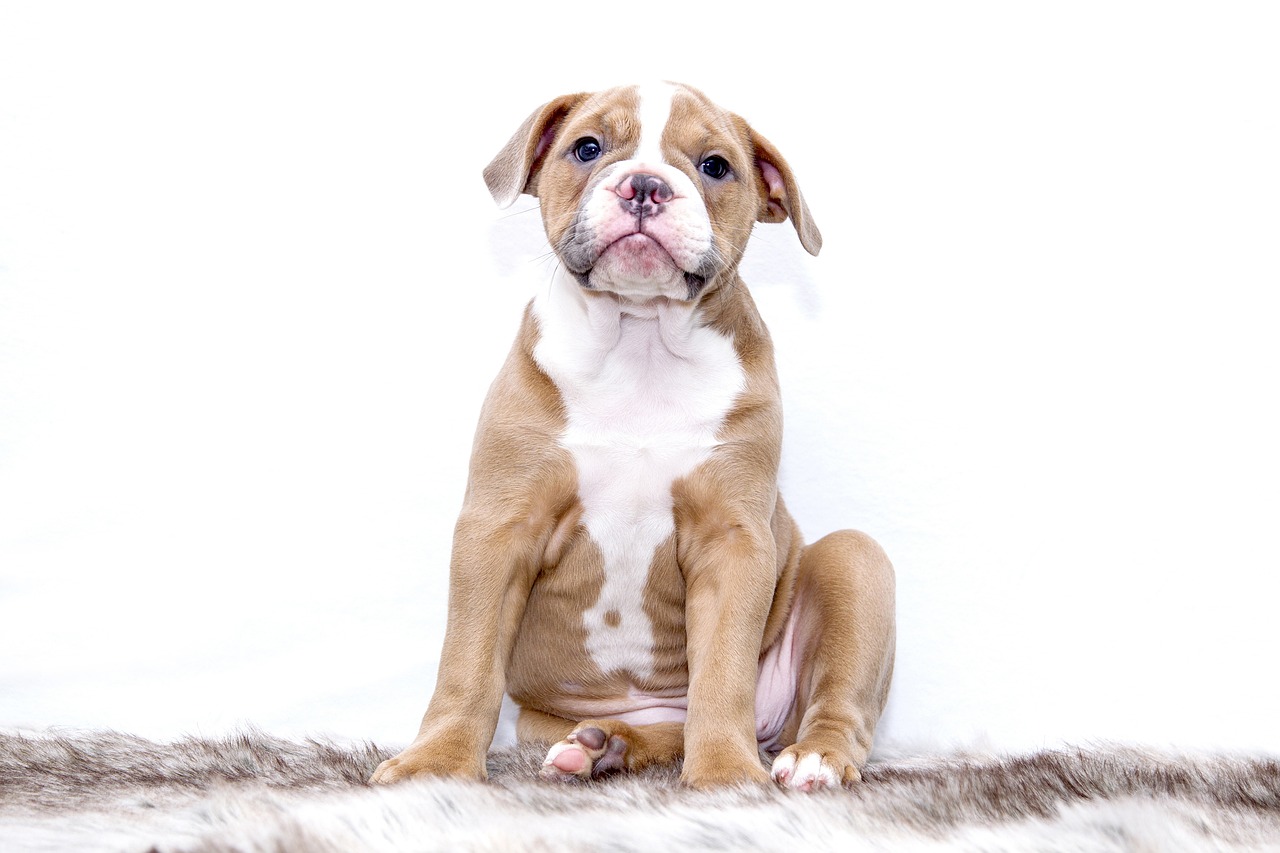
Identifying Triggers
Identifying the specific large objects that trigger your dog's fear is a crucial step in helping them overcome it. Think about it: just like humans, dogs have their own unique experiences and perceptions of the world around them. Some dogs may be terrified of a simple garden gnome, while others might panic at the sight of a moving truck. Understanding what causes your dog to feel anxious can help you tailor your approach to their training.
Start by observing your dog in different environments. Take note of their reactions to various large objects. For instance, does your dog bark and retreat when a neighbor's truck pulls up, or do they seem more comfortable around large furniture in your home? These observations can provide valuable insights into your dog’s specific fears. You might want to keep a journal to track these instances, noting the type of object, the situation, and your dog's response. This can also help you identify patterns over time.
Common triggers often include:
- Vehicles: Cars, trucks, and buses can be intimidating due to their size and noise.
- Furniture: Large pieces like couches or tables can appear daunting, especially if they are moved around.
- Construction Equipment: Machinery such as bulldozers or cranes can be particularly frightening due to their movement and noise.
Additionally, environmental factors can play a significant role in how your dog perceives these triggers. For example, if a large object is accompanied by loud noises or sudden movements, your dog's anxiety may increase. It's essential to create a calm and controlled environment when introducing these objects to your dog. Take note of how your dog reacts in different settings—perhaps they are more relaxed in familiar surroundings compared to a bustling park. Understanding these nuances can help you develop a focused training plan that addresses your dog's specific fears.
In summary, identifying triggers involves keen observation and understanding of your dog's behavior. By keeping track of their reactions to various large objects and the contexts in which these fears arise, you can create a tailored approach to help them gradually overcome their anxiety. With patience and consistent effort, you can help your furry friend feel more at ease in their surroundings.
Q: How long does it take for a dog to overcome their fear of large objects?
A: The timeline varies depending on the dog and the severity of their fear. With consistent training and patience, many dogs show improvement within weeks, while others may take months.
Q: Can I use treats to help my dog overcome their fear?
A: Yes! Positive reinforcement, such as treats, can be very effective in encouraging your dog to face their fears. Just be sure to reward them when they display calm behavior around the trigger.
Q: When should I seek professional help for my dog's fear?
A: If your dog’s fear is severe, causing them to act aggressively or if they are unable to function normally in their daily life, it’s best to consult a veterinarian or a certified dog trainer for guidance.
Common Triggers
When it comes to helping your furry friend overcome their fear of large objects, understanding the specific triggers is a crucial first step. Dogs can be surprisingly sensitive creatures, and what might seem ordinary to us can be absolutely terrifying to them. For instance, large vehicles like trucks and buses can loom over them, creating a sense of vulnerability. Imagine standing next to a giant, roaring beast—that's how a dog might feel in the presence of a large vehicle!
Moreover, furniture can also be a source of anxiety. A simple coffee table or a tall bookcase can appear daunting, especially if your dog has had a previous negative experience associated with similar objects. The shadows they cast or the way they move when bumped into can trigger a sense of fear. It's essential to observe your dog's reactions to these everyday items, as they may exhibit signs of discomfort such as backing away, growling, or even attempting to hide.
Another common trigger is construction equipment. The loud noises and sudden movements of machinery can send even the bravest dog scurrying for cover. Think about how unsettling it is for us when we hear a loud siren or a sudden crash; for dogs, the fear can be magnified, especially if they aren't accustomed to such sounds. It's vital to note that these triggers can vary significantly between individual dogs. Factors such as breed, past experiences, and even their current mood can influence their reactions.
In addition to these objects, environmental factors play a significant role in exacerbating fear. For example, a bustling park filled with people and large structures can overwhelm a timid dog. The combination of noise, movement, and the presence of unfamiliar objects can create a perfect storm of anxiety. By identifying these common triggers, you can tailor your approach to desensitization effectively. Remember, every dog is unique, and what terrifies one may not faze another. Understanding your dog's specific fears is key to helping them gain confidence.
Behavioral Signs
When it comes to understanding your dog's fear of large objects, paying attention to their is crucial. Dogs, like humans, express their feelings through their actions, and recognizing these signs can help you intervene appropriately. For instance, if your dog starts to bark excessively or whine when encountering a large object, it's a clear indication that they are feeling anxious or threatened. This vocalization is their way of expressing discomfort, and it’s important to address it rather than dismiss it as mere noise.
Another common behavioral sign is hiding. If your dog seeks refuge behind furniture or tries to squeeze into tight spaces when a large object is nearby, this is a strong signal that they are feeling scared. Dogs often retreat to places where they feel safe, and understanding this instinct can help you create a more comforting environment for them. Moreover, you might notice your dog trembling or exhibiting a stiff body posture, which are physical manifestations of fear. Their tail may be tucked between their legs, and they might avoid eye contact, indicating a desire to escape the situation.
In some cases, dogs may also display destructive behavior as a response to fear. This could involve chewing on furniture or digging at doors in an attempt to get away from the perceived threat. It's essential to recognize that these actions stem from anxiety and are not simply a result of bad behavior. Understanding these signs can guide you to provide the right support and intervention to help your dog cope with their fears.
To summarize, here are some key behavioral signs to watch for:
- Barking or whining when near large objects.
- Hiding behind furniture or seeking tight spaces.
- Trembling or exhibiting a stiff body posture.
- Destructive behavior as a reaction to fear.
By being observant and responsive to these signs, you can take proactive steps to help your dog feel more at ease around large objects. Remember, patience and understanding are key as you guide your furry friend through their fears.
Q: How long does it take for a dog to overcome their fear of large objects?
A: The duration varies from dog to dog, depending on their temperament and past experiences. Some dogs may take weeks, while others may require months of consistent training and exposure.
Q: Can I use treats to help my dog feel better around large objects?
A: Absolutely! Using treats as a form of positive reinforcement can significantly boost your dog's confidence. Just ensure you reward them when they exhibit calm behavior around the object.
Q: Should I force my dog to confront their fears?
A: No, forcing your dog can increase their anxiety and worsen the fear. Instead, use gradual exposure techniques to help them acclimate at their own pace.
Q: When should I seek professional help?
A: If your dog's fear is severe, leads to aggressive behavior, or if you're unsure how to proceed, consulting a veterinarian or a certified dog trainer is advisable.
Environmental Factors
When it comes to helping your dog overcome their fear of large objects, play a significant role. Imagine walking your furry friend and suddenly encountering a massive construction vehicle. The noise, movement, and sheer size can overwhelm even the bravest of pups! It's essential to recognize that dogs are highly sensitive to their surroundings, and various elements can exacerbate their anxiety.
For instance, consider the impact of noise. Loud sounds such as honking horns, clattering machinery, or even the rumble of a passing truck can send your dog into a panic. This auditory stimulation can heighten their fear of large objects, making them feel threatened and vulnerable. Additionally, the movement of these objects—whether it’s a bus driving by or a person moving furniture—can create a sense of unpredictability that dogs often find unsettling.
Moreover, unfamiliar settings can amplify your dog's fears. If your dog is used to a quiet neighborhood and suddenly finds themselves in a bustling city with large crowds and towering buildings, it can be a recipe for anxiety. The unfamiliarity of the environment can trigger their instinctual fight-or-flight response, causing them to react negatively to large objects they might not have encountered before.
To help mitigate these environmental factors, you can take several proactive steps:
- Assess the surroundings: Before venturing out, observe the environment and identify potential triggers.
- Gradual exposure: Introduce your dog to larger objects in a controlled manner, starting from a distance.
- Create a calm atmosphere: If training at home, ensure the environment is quiet and free from distractions.
By understanding how environmental factors influence your dog's fear responses, you can tailor your training approach to address these challenges effectively. Remember, patience and consistency are key! With time, your dog can learn to navigate their fears and feel more secure in various environments.
Q: How long will it take for my dog to overcome their fear of large objects?
A: The time it takes varies by dog. Some may show improvement within weeks, while others might take months. Consistency and positive reinforcement are crucial.
Q: Should I force my dog to confront their fears?
A: No! Forcing a dog to confront their fears can worsen their anxiety. Gradual exposure and positive reinforcement are more effective.
Q: Can medication help my dog with their fear of large objects?
A: In some cases, veterinarians may prescribe anti-anxiety medication. Consult your vet for the best approach tailored to your dog's needs.
Desensitization Techniques
Desensitization is a powerful method to help your dog overcome their fear of large objects. This process involves gradually exposing your pet to these objects in a controlled and safe manner, allowing them to become accustomed to their presence without feeling overwhelmed. Think of it like introducing a friend to a new hobby; you wouldn’t throw them into the deep end right away. Instead, you’d start with the basics, ensuring they feel comfortable and confident. The same principle applies when helping your dog.
The first step in desensitization is to identify the specific large objects that trigger your dog’s fear. Is it the sound of a garbage truck rumbling down the street? Or perhaps the sight of a large delivery van parked in front of your house? Once you’ve pinpointed these triggers, you can begin the gradual exposure process. Start by introducing your dog to the object from a distance, where they feel safe and secure. This distance is crucial; too close too soon can lead to panic and regression.
As your dog becomes more comfortable, you can slowly decrease the distance between them and the object. For instance, if your dog is scared of bicycles, begin by observing a bike from afar during a quiet moment. Reward your dog with treats and praise for remaining calm. Over time, move closer until your dog can see the bicycle up close without displaying signs of fear. This gradual approach helps build their confidence, making the object seem less threatening.
Incorporating positive experiences during this exposure is essential. You can use treats, toys, or even playtime to create a positive association with the large object. For example, if you’re working on desensitizing your dog to a large piece of furniture, you might place their favorite toy nearby. This encourages them to approach the object willingly, reinforcing the idea that good things happen around it.
Additionally, consider using a technique called counter-conditioning. This involves changing your dog’s emotional response to the feared object from negative to positive. When your dog sees the large object, immediately offer a treat or engage in a fun activity. Over time, your dog will begin to associate the object with positive experiences rather than fear.
It’s also important to monitor your dog’s body language throughout the desensitization process. Look for signs of stress or discomfort, such as panting, pacing, or trying to hide. If you notice these signs, it’s a signal to take a step back and give your dog more time to adjust. Remember, patience is key. Each dog is unique, and the pace of progress will vary.
Lastly, practice makes perfect. Regular, short training sessions can be more effective than infrequent, long ones. Aim for daily interactions with the large objects your dog fears, gradually increasing exposure time as they become more comfortable. With dedication and the right techniques, you’ll help your furry friend conquer their fears and enjoy life with newfound confidence.
- How long does desensitization take? The duration varies for each dog. Some may adapt quickly, while others might need weeks or even months of consistent practice.
- Can I desensitize my dog to multiple objects at once? It’s best to focus on one object at a time to avoid overwhelming your dog.
- What if my dog doesn't respond to desensitization techniques? If your dog continues to show severe fear, consider consulting a professional dog trainer or a veterinarian for further guidance.
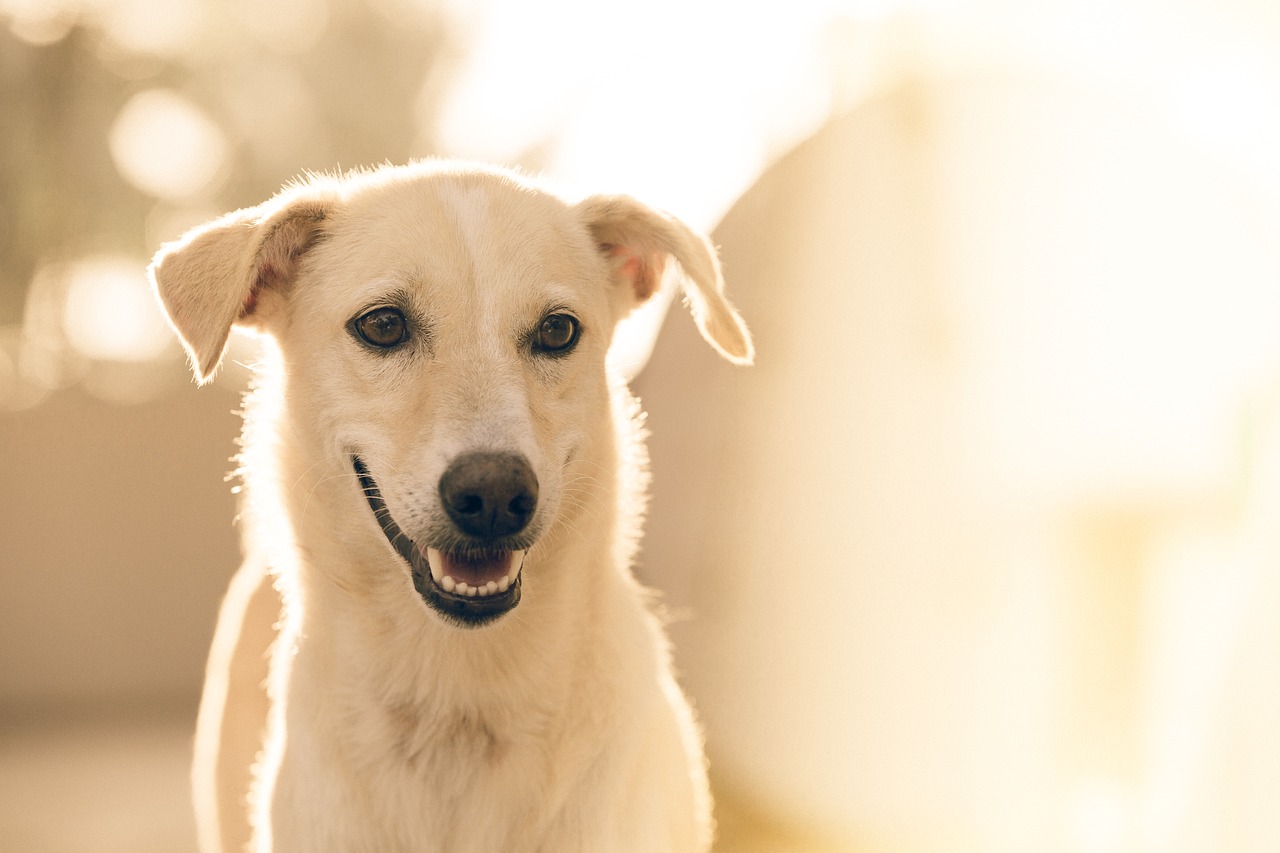
Positive Reinforcement Training
When it comes to helping your furry friend overcome their fear of large objects, is not just a method; it’s a powerful tool that can transform your dog's behavior and build their confidence. Imagine this: every time your dog faces a large object, instead of feeling anxious, they start to associate it with something positive. That's the magic of positive reinforcement! By rewarding your dog for calm behavior around these intimidating items, you're not only helping them to feel more at ease but also strengthening your bond.
So, how does this work? It’s pretty simple! Whenever your dog approaches a large object without showing signs of fear, you reward them with treats, praise, or their favorite toy. This could be a moment when they pass by a parked car or even just glance at a piece of furniture without barking. The key is to catch them in the act of being brave and reinforce that behavior. Over time, they’ll start to realize that large objects are not something to be feared, but rather, they can be met with curiosity and even excitement.
To implement this training effectively, it’s crucial to establish a consistent reward system. Here’s a simple breakdown of how you can set it up:
| Action | Reward | Frequency |
|---|---|---|
| Approaching a large object calmly | Treat or praise | Every time |
| Ignoring a large object | Toy or affection | Every time |
| Playing near large objects | Extra playtime | Occasionally |
As you can see, consistency is key! Make sure to reward your dog immediately after the desired behavior so they can make the connection between the action and the reward. This method not only encourages good behavior but also helps in building a sense of trust between you and your pet. They’ll start to look at you as their safe haven during moments of uncertainty, and that’s an invaluable relationship to foster.
Another essential aspect of positive reinforcement training is creating a safe space for your dog. This is where they can retreat if they feel overwhelmed. It could be a cozy corner of your living room or a designated area in your yard. Make this space inviting with their favorite blanket, toys, and some treats. When your dog knows they have a safe place to go, they’ll be more willing to face their fears, knowing they can retreat if they need to.
In conclusion, positive reinforcement training is a fantastic way to help your dog overcome their fear of large objects. By rewarding their bravery, creating a safe environment, and being consistent with your approach, you’re setting them up for success. Remember, patience is key. Every small victory counts, and soon enough, you’ll see your dog strutting confidently past those once-scary large objects!
- How long does it take for my dog to overcome their fear? - The timeline varies for each dog. With consistent training, some may show improvement in a few weeks, while others might take several months.
- Can I use treats from my dog's regular diet? - Yes! Just ensure that you’re not overfeeding them. Use small portions as rewards during training.
- What if my dog is too scared to approach the large object? - Start from a distance where they feel comfortable and gradually decrease that distance as they become more confident.
Reward Systems
Establishing a consistent reward system can significantly enhance your dog's learning experience when it comes to overcoming their fear of large objects. Just like humans thrive on recognition and rewards, our furry friends also respond positively to encouragement and incentives. When you reward your dog for facing their fears, you’re not just helping them feel good about their actions; you're also reinforcing the idea that large objects are not something to be afraid of. This creates a positive association in their minds, making it easier for them to confront their fears in the future.
To create an effective reward system, consider the following components:
- Immediate Rewards: Always reward your dog immediately after they exhibit a positive behavior. This helps them make the connection between their action and the reward.
- Variety of Rewards: Use a mix of treats, praise, and playtime as rewards. Some dogs might prefer a tasty treat, while others may respond better to a game of fetch or a good belly rub.
- Consistency: Be consistent with your rewards. If you reward your dog for facing a large object today, do the same tomorrow. Consistency builds trust and understanding.
It’s also important to tailor the rewards to your dog’s preferences. Some dogs may be motivated by food, while others might find toys or verbal praise more enticing. Observing your dog’s reactions can help you determine the most effective rewards. For instance, if your dog perks up at the sound of their favorite toy, that’s a clue that you should incorporate it into your training sessions. Additionally, you can create a reward chart to track your dog's progress. This not only keeps you organized but also allows you to celebrate milestones together.
Remember, the goal is to make your dog feel comfortable and confident around large objects. By using a thoughtful and engaging reward system, you’re paving the way for a more relaxed and fearless pup. As your dog begins to associate these large objects with positive experiences, you’ll likely see a significant reduction in their anxiety and fear.
Q: How long does it take for a dog to overcome their fear of large objects?
A: The duration varies depending on the individual dog and the severity of their fear. With consistent training and positive reinforcement, many dogs show improvement within weeks.
Q: What types of treats work best for rewarding my dog?
A: High-value treats, such as small pieces of chicken or cheese, often work best. Choose treats your dog loves to keep them motivated.
Q: Can I use toys as rewards?
A: Absolutely! Many dogs respond well to toys, especially if they have a favorite one they enjoy playing with.
Q: Should I punish my dog for showing fear?
A: No, punishment can increase anxiety and worsen the fear. Focus on positive reinforcement and creating a supportive environment.
Q: When should I seek professional help?
A: If your dog's fear is severe or doesn't improve with training, it's advisable to consult a veterinarian or a certified dog trainer for additional support.
Creating a Safe Space
Creating a safe space for your dog is one of the most essential steps in helping them overcome their fear of large objects. Just like humans, dogs need a sanctuary where they feel secure and can retreat when things get overwhelming. This space should be a haven filled with comfort, familiar scents, and items that make your furry friend feel at ease.
To start, choose a quiet area in your home that is away from the hustle and bustle of daily life. This could be a corner of your living room, a cozy spot in the bedroom, or even a designated room where your dog can relax. Make sure this space is free from loud noises and sudden movements, as these can trigger anxiety. You might want to use a dog bed or a soft blanket to create a comfortable resting place. Adding some of your dog's favorite toys can also help reinforce the idea that this is a safe haven.
Consider the following elements when setting up this safe space:
- Comfortable Bedding: Choose a bed that is the right size for your dog, ensuring it is soft and inviting.
- Familiar Scents: Incorporate items that carry your scent or your dog's scent, such as worn clothing or blankets.
- Low Lighting: If possible, keep the lighting soft and gentle to create a calming atmosphere.
- Accessibility: Ensure your dog can easily access this space whenever they need to feel safe.
Once you have created this sanctuary, it's important to encourage your dog to use it. You can do this by leading them to their safe space during moments of stress or when they encounter large objects that frighten them. Use a calm and soothing voice to reassure them, and offer treats or their favorite toys as a reward for going to their safe area. Over time, your dog will learn to associate this space with comfort and safety, making it easier for them to cope with their fears.
Moreover, remember that consistency is key. Regularly allowing your dog to retreat to their safe space during training sessions or when they feel anxious will help reinforce the idea that this is a positive and secure environment. As they become more comfortable, you can gradually introduce them to large objects in a controlled manner, all while ensuring they have access to their safe space whenever needed. This method not only helps with desensitization but also builds their confidence, allowing them to face their fears with a sense of security.
Q: How can I tell if my dog needs a safe space?
A: If your dog shows signs of anxiety, such as trembling, barking, or hiding when encountering large objects, they likely need a safe space to retreat to.
Q: How long should I let my dog stay in their safe space?
A: Allow your dog to stay in their safe space as long as they need. It's essential to respect their comfort level and give them the time they require to feel secure.
Q: Can I use a crate as a safe space?
A: Yes, a crate can be an excellent safe space if your dog is comfortable with it. Make sure to make it cozy and inviting, and never use it as a form of punishment.
Q: What if my dog doesn't want to use the safe space?
A: If your dog is hesitant, try to make the space more appealing with treats, toys, and your presence. Gradually encourage them to explore the area without forcing them.
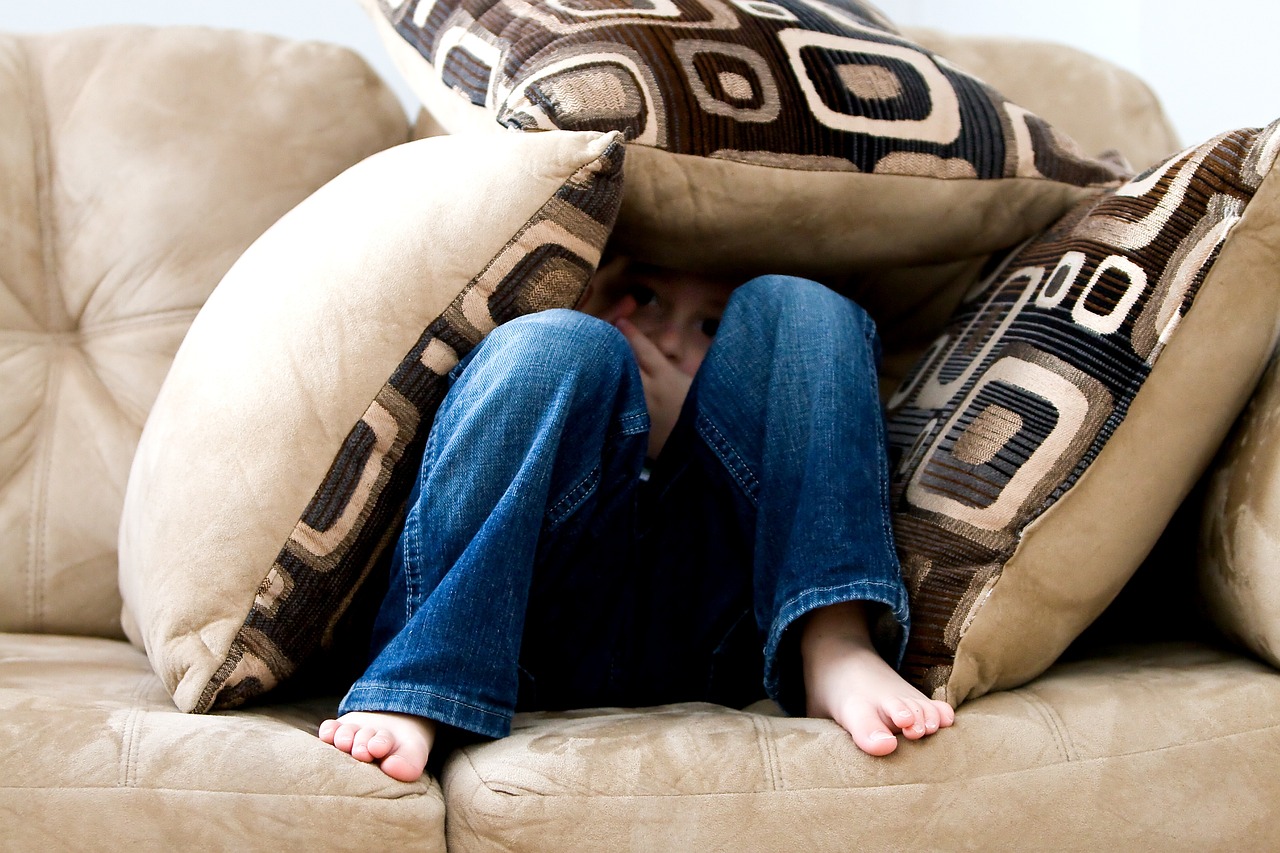
Seeking Professional Help
While many dog owners can successfully help their pets overcome fear through patience and training, there are instances when the fear is too severe or complex for home remedies alone. In such cases, seeking professional help can be a game-changer. Professional trainers and veterinarians have the expertise to assess your dog's specific needs and can provide tailored strategies to address their fears effectively.
When should you consider reaching out for professional assistance? If you notice that your dog's fear is interfering with their daily life—such as avoiding walks, refusing to go outside, or exhibiting aggressive behavior towards large objects—it may be time to consult an expert. A professional can help you understand the underlying causes of your dog's fear and develop a comprehensive plan to tackle it. This plan might include behavioral modification techniques, medication, or a combination of both, depending on the severity of the fear.
Here are some signs that indicate your dog may benefit from professional help:
- Persistent Fear: If your dog continues to show signs of fear despite your best efforts, it’s crucial to seek guidance.
- Severe Anxiety: Excessive barking, trembling, or hiding can indicate a level of anxiety that requires professional intervention.
- Aggressive Behavior: If your dog reacts aggressively towards large objects, this behavior can pose a risk to both your pet and others.
When looking for a professional, consider the following options:
| Type of Professional | Description |
|---|---|
| Veterinarian | A vet can assess your dog's physical health and may prescribe medication to help manage anxiety. |
| Certified Dog Trainer | Trainers can provide specialized training techniques tailored to your dog's specific fears. |
| Animal Behaviorist | These professionals focus on understanding the root causes of behavioral issues and can develop a comprehensive treatment plan. |
It's essential to choose a professional who uses positive reinforcement methods and has a good reputation. Ask for recommendations from fellow pet owners, read reviews, and don’t hesitate to ask questions during your initial consultation. Remember, your dog's well-being is the priority, and finding the right help can lead to significant improvements in their quality of life.
Q: How do I know if my dog's fear is severe enough to seek professional help?
A: If your dog displays extreme anxiety, aggression, or avoidance behaviors that disrupt their daily life, it’s time to consult a professional.
Q: What should I look for in a dog trainer or behaviorist?
A: Look for someone with certifications, experience in dealing with fear-based behaviors, and a positive reinforcement training philosophy.
Q: Can medication help my dog with fear issues?
A: Yes, in some cases, veterinarians may prescribe medication to help manage anxiety, particularly if the fear is severe.
Q: How long does it typically take for a dog to overcome their fear?
A: The timeline varies depending on the individual dog and the severity of the fear. Consistent training and support can lead to improvements over weeks or months.
Frequently Asked Questions
- What are some common signs that my dog is afraid of large objects?
Dogs often exhibit a variety of behavioral signs when they are scared. Common indicators include barking, hiding, trembling, or even refusing to move towards the object. If you notice your dog displaying these behaviors, it’s a good sign that they might be fearful of something large.
- How can I identify what specific large objects are triggering my dog's fear?
To pinpoint your dog's triggers, observe their reactions in different environments. Take note of any large objects that cause them to become anxious or scared. Keeping a journal of these incidents can help you identify patterns and specific items that need to be addressed.
- What is desensitization, and how can I use it to help my dog?
Desensitization is a gradual process where you expose your dog to the large object that scares them in a controlled and positive manner. Start from a distance where your dog feels safe and gradually decrease that distance over time while rewarding them for calm behavior. This helps them associate the object with positive experiences.
- Why is positive reinforcement important in training my dog?
Positive reinforcement is crucial because it encourages your dog to repeat desired behaviors. By offering treats, praise, or playtime when they face their fears, you help build their confidence and create a positive association with large objects.
- When should I consider seeking professional help for my dog's fear?
If your dog's fear is severe, persistent, or causing them significant distress, it may be time to consult a veterinarian or a certified dog trainer. They can provide tailored strategies and support to help your dog overcome their fears effectively.
- How can I create a safe space for my dog during training?
To create a safe space, choose a quiet area in your home where your dog feels comfortable. Use their favorite bed or blanket, and make sure it’s free from distractions. This space should be a retreat where they can relax and feel secure while gradually facing their fears.
















